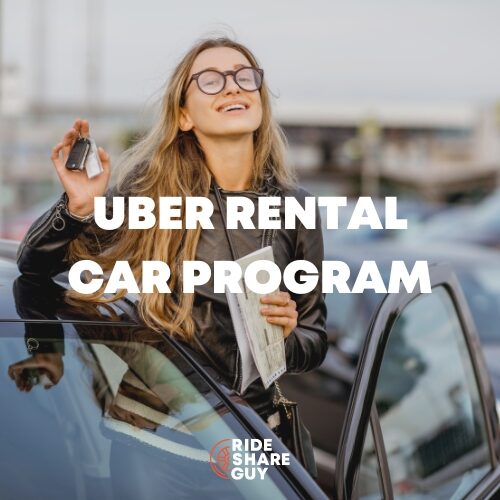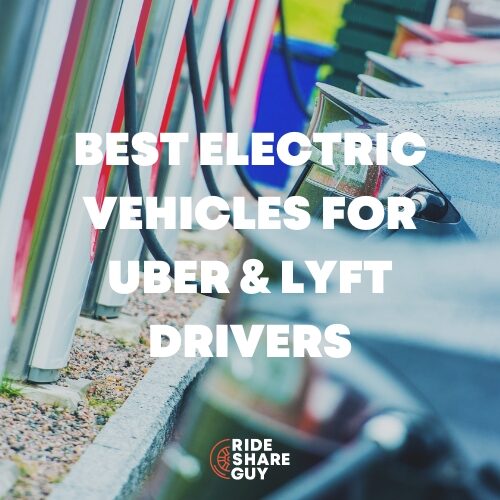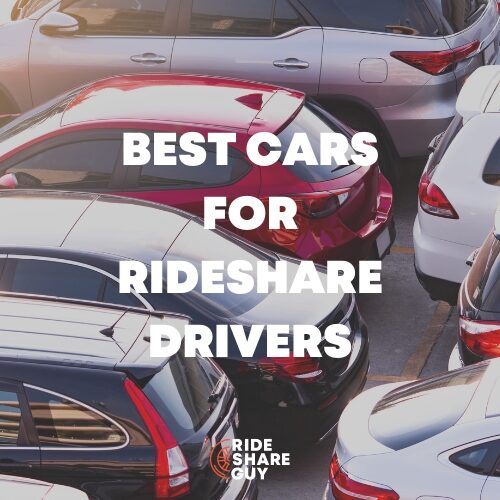Renting vs. owning your car is a hot topic here, with plenty of Uber vehicle rental options…unless you just need to rent for a day or two. Senior Contributor Gabe Ets-Hokin parked his swanky new Tesla for a day to find out what it’s like to drive an OXO daily rental.
The norm in the United States is one person, one car. Our world has been designed to make that dream affordable and achievable for the 280 million Americans who own cars. But not all of those cars are usable for rideshare work—too old, too dented, not enough doors—and not all folks who need to earn a buck as a driver own their own cars.
There are rental programs aplenty—check out those resources at our Uber vehicle marketplace – but not a lot in the by-the-day category. If you want flexibility and convenience, you don’t have a lot of choices. But then, two years ago, a Stanford grad named James Pelly launched OXO. About time we reviewed it, don’t you think?
What is OXO?
OXO is a car-rental platform similar to Turo or HyreCar with a twist: Uber and Lyft drivers rent by the day, up to about 12 hours, for about $5 an hour (with a 10-hour minimum). The cars are mostly owned by private individuals who place their cars on the platform; think AirBnB but for cars.
How does renting with OXO work?
OXO’s cars are almost all owned by OXO members, who use the platform to match their car to renters. The idea is that after you drive to work in the morning, instead of paying $20 (or much more in some places) a day to park, you meet your renter and hand over the keys.
At the end of the day, they drop the car off, clean and full of gas. Not only did you save $20, you made about $30 from the rental fee. Sure, your car will wear out and depreciate faster, but somebody else is paying for most of your automotive expenses if it’s rented enough.
What does it cost to rent with OXO?
It’s $50 a day for up to 10 hours and an extra $5 for each additional hour, but if you miss the hard deadline to turn the car in, you get charged for a full extra day.
The driver is responsible for bringing the car back about the same as they found it, so you’ll have to replace the gas used (if it starts with a quarter tank, you bring it in with a quarter tank, etc.), and wash or vacuum it if necessary.
What cars does OXO have?
Oxo seems to have every kind of car you can imagine, but availability is a grab bag. My choices were a late-model Mitsubishi Mirage G4, or a 12-year-old Hyundai Sonata. If I had pushed the issue, there were other cars, including a late-model Honda HR-V, Toyota Corollas and Nissan Versas. I didn’t see any EVs or hybrids; bummer!
Pro-tip: If you’re interested in learning more about what it’s like to rent an EV for rideshare, join the largest Facebook group for Uber and Lyft EV drivers here.
Where can you rent OXO vehicles?
Right now it seems OXO is only available in San Francisco and Oakland, California, but has plans to expand.
How do you use OXO?
The OXO app is in the Apple and Android app stores, so it’s easy to install and create an account.
To get started, you follow a procedure that’s familiar and easy for gig workers. You create the account, confirm your identity and log in, create a profile with a selfie (that’s used to match your ID) and a credit card, and finally add the logins and passwords for the companies you drive with, letting OXO know you’re an actual rideshare driver and not some weirdo, or at least not a dangerous weirdo.
Once you do that, OXO is very aggressive about getting you signed up and renting ASAP. Within hours I had an OXO rep texting me to set up my in-person orientation appointment, mandatory before you can rent.
Once you’re set up and oriented, you can book your rental.
The app’s dashboard has a calendar, and you can rent up to two weeks ahead of time. The app shows you which cars are available at your favored location, and once selected, you’re told to pick the car up from the owner or at one of OXO’s managed locations.
If you pick up from the owner, you work the deets out with them directly. After you’ve driven, you’ll get follow-up texts asking about your experience and when you’ll need the car again.
What’s it like renting through OXO?
OXO’s rental experience is simple and seamless. First, they wanted me to appear at the rental location—the monthly parking section of a large underground parking garage in Oakland, California—for an orientation.
There, an OXO rep met with me to make sure all my documents were in order and all my questions were answered. He showed me how to return the key at the end of the shift and how to get into the garage after hours to drop it off.
The night before my first rental, an OXO rep assigned me the 2011 Hyundai Sonata Hybrid. I asked if they had a newer car, so I was offered a 2021 Mitsubishi Mirage G4, (please Mitsubishi owners take no offense) a very budget-oriented model that I don’t really enjoy driving (I’ve rented one).
I decided driving an older car would be okay if I could at least save some money on gas—the Sonata’s EPA rating was 34 mpg in the city, 39 on the highway.
OXO texted images of the car’s insurance, inspection, and registration documents, which I quickly and easily uploaded to Uber and Lyft after creating new car profiles on each app. I was ready to drive.
At the Oakland garage, drivers must pick the car up before 10 am, and then they get to keep the car for 10 hours. After 10 hours, you pay an extra $5 an hour, but if the car is back after one am you’re charged for an extra day.
Not such a great deal for evening drivers, and since the earliest you can pick up is 7:00 am, not perfect for daytime drivers (who often depend on those zero-dark-thirty airport trips) either. OXO’s business model allows owners and renters to work out more convenient times, so this may not be everyone’s experience.
An OXO rep was waiting at the garage. He got me my key, pointed out my car, told me it was okay to park my personal car there while I was renting, and sent me on my way.
When I got in the car, it was disappointingly grubby inside, and though the gas gauge read full, as soon as I drove a few miles it dropped down to about 4/5ths. Sigh. But at least the car was listed on both my Uber and Lyft apps, with no problems getting it onto my accounts; OXO sent me the required documents, including the inspection, and both systems had me approved in minutes.
The driving experience was as good as it could be with a rattly, dusty 100,000-mile gas-guzzling semi-hoopty. I was able to get my phone paired to the ancient Bluetooth system and the car generally did its job without much complaint. Instead, the complaining was from me, when I realized I probably got less than about 18 miles per gallon and had to buy the next driver two or three gallons of gas.
Still, I made enough money in seven hours to know I’d easily surpass the $250 earnings guarantee OXO offers to new drivers. If I didn’t have a car to use for Uber or Lyft, I know that driving an OXO car would get me by.
When I sent a text complaining about the bait-and-switch, OXO was clear and unapologetic: the Hyundai was a hybrid (it wasn’t—I ran the VIN to check) and any refund or reimbursement for the extra $30 I (or maybe Harry if he doesn’t read the expense reports too carefully) spent on gas was simply impossible.
This is not a good way to get repeat business, if you ask me, and the lack of ownership of the obvious mistake was insulting. At least they didn’t charge me for returning the car almost as dirty as I returned it.
Needless to say, I would try any option before using OXO again, but your experience may be much better. Or perhaps you’re a fan of the movie The Blues Brothers and appreciate dirty, gas-guzzling cars? Choices are limited, but you do have a choice—choose carefully!
Pros of using OXO to drive rideshare:
- Convenient and simple
- Very good integration with Uber and Lyft’s systems.
- At $1000 a month (20 shifts at $50 each), it’s more expensive than buying a new or used car.
- It’s also a little more per day than an Avis, Hertz or Lyft Express Drive rental, but it is more flexible, especially for part-time drivers or a driver who needs to replace a car for just a short time.
- Customer service support was responsive and attentive.
Cons of using OXO to drive for Uber or Lyft:
- Pickup and drop-off times are fixed around the car owner’s schedule, not the driver’s.
- My car was dirty and not well maintained
- Customer service was unwilling to compensate me for an error the company made.
- Car choice is limited.
What’s Next for OXO?
My experience with OXO showed me an interesting peer-to-peer rental model for rideshare and gig workers. The idea—that 9-5ers looking to save money on parking while capitalizing on the revenue-producing possibilities of their personal car—is a pretty good one, and a common one in the “sharing” economy. The devil, of course, is in the details.
OXO’s Mauro Padillo told me the company is “spending a lot, growing a lot and we’re getting a lot of new drivers.” Expansion plans include an updated app to require less action from OXO staff, offering the service in San Jose (further pushes to southern California and other states are also in the plans) and multi-day rentals.
It’s hard to find by-the-day rental for rideshare work, and OXO, with its flaws, is a viable option. For $50 a day including insurance it’s about as cheap as it gets, it’s pretty flexible and has the potential to offer drivers a wide range of car options, as well as pick-up times and locations.
Twenty bucks—the difference between the $30 the car owner gets paid and the $20 the renter shells out—doesn’t seem like a lot of margin after paying for insurance, the app, and other services, but maybe Mr. Pelly knows something I don’t and will make big piles of money.
After all, Uber and Lyft have shown us you don’t need to be profitable to be successful, just have lots of volume. It could be an interesting business to watch as it expands.
Have you used OXO? Tell us about it below!
-Gabe @ RSG




